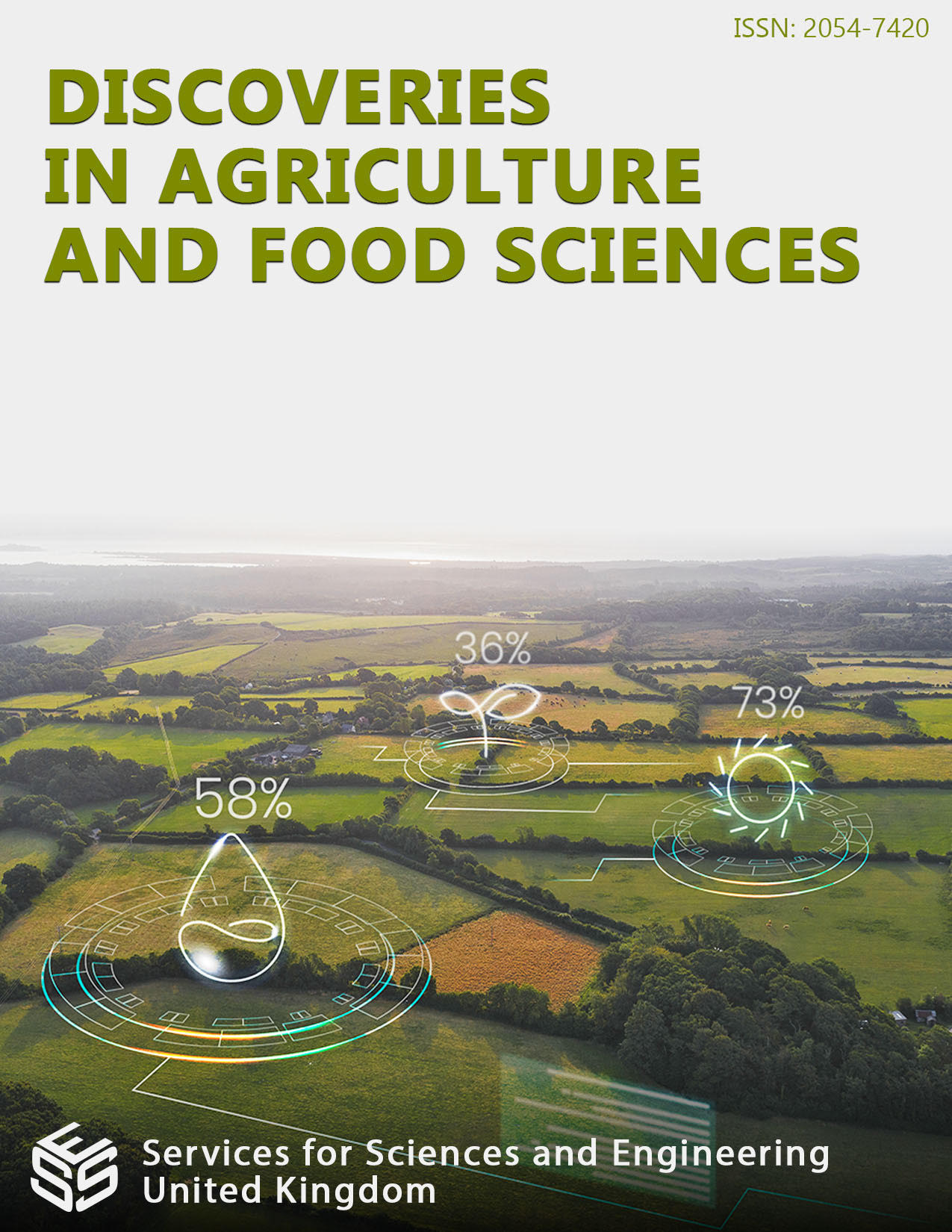Effects of Foam Mat Drying on the Nutritional, Functional, Antioxidant, and Sensory Properties of Soursop-Based Crisps
DOI:
https://doi.org/10.14738/tnc.124.16803Keywords:
Conventional drying, foam mat drying technology, soursop fruits, nutritional potential, functional properties, hedonic testAbstract
This study investigates how foaming agents affect the nutritional, antioxidant, physicochemical, and sensory qualities of soursop-based crisps, which are crucial for meeting year-round market demand due to fruit cultivation limitations. Soursop pulp was whipped with varying concentrations of soy proteins (SP6% and SP8%), egg proteins (EP6% and EP8%), and whey proteins (WP6% and WP8%) to create seven treatments, including a control without foaming agents. The samples were then dried at 70°C, and their proximate and phytochemical composition, functional properties, antioxidant activity, and sensory attributes were assessed. Compared to the control, soursop-based crisps made with foaming agents contained higher fat content (1.87–4.15%), with EP10% and WP8% showing high ash content (5.82–6.60%), and WP10% and EP8% having elevated carbohydrate (85.92–87.66%) and protein (2.75–3.88%) levels. EP10% had the highest swelling index (3.03%) and oil absorption capacity (25.33%), while SP8% and SP10% exhibited greater water absorption (61.33–63.67%). Traces of oxalates, phytates, and tannins were found in all samples (<0.6 mg/ml). WP8% and WP10% had the highest flavonoid content (10.16–10.71 mgQE/ml), while SP10%, EP10%, WP8%, and WP10% showed the highest ferric-reducing activity (IC50:0.02–0.03 mg/ml). Most panelists (74% to 100%) favored soursop-based crisps from foam mat drying. In conclusion, foam mat drying affected the nutritional, physicochemical, and sensory properties of soursop-based crisps differently based on the type and concentration of foaming agents used, suggesting the method's potential for long-term fruit preservation.
Downloads
Published
How to Cite
Issue
Section
License
Copyright (c) 2024 Saha Foudjo Brice Ulrich, Antoinette Nain Ngeh, Richard Aba Ejoh

This work is licensed under a Creative Commons Attribution 4.0 International License.






